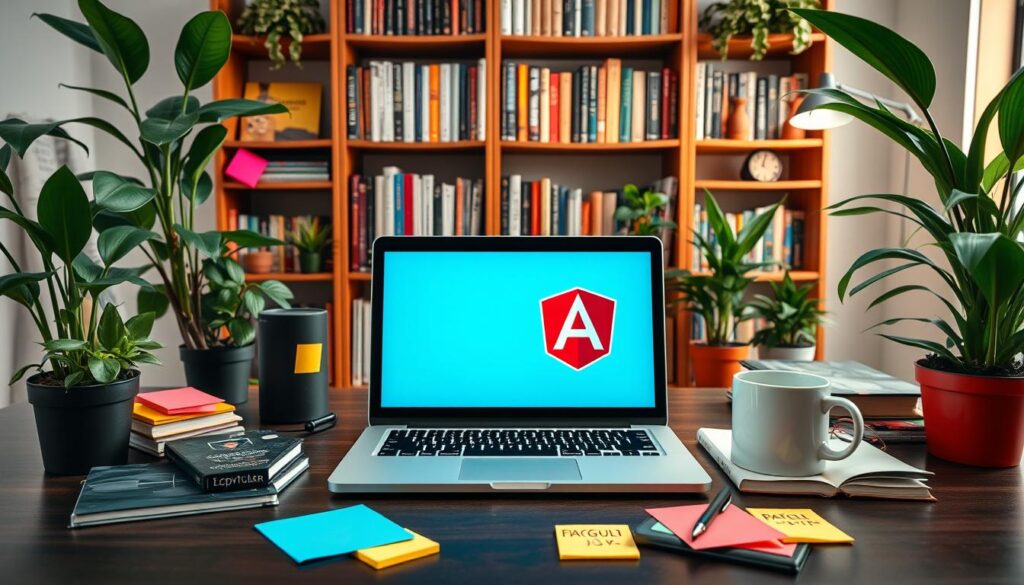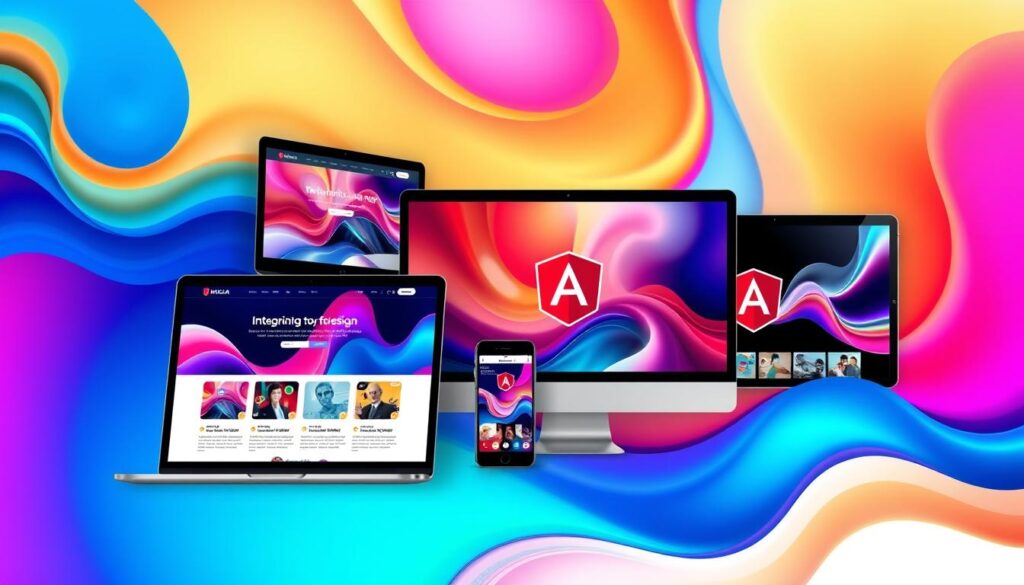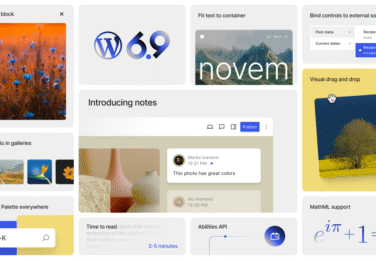How to use React or Angular to build any frontend development

Table of Content
As an Australian web developer, I’ve faced many challenges in frontend development. The fast-changing world of web tech can be overwhelming. But, with the right tools and knowledge, we can make amazing, interactive web sites that grab people’s attention.
Today, I’m excited to share my experience with you. We’ll explore React and Angular, two top frontend frameworks. They’ve changed how we make modern websites and apps.
Key Takeaways
- Discover the core principles of frontend development, including HTML, CSS, and JavaScript.
- Explore the component-based architecture of React and the robust features of Angular.
- Learn techniques for improving web performance and enhancing user experience.
- Master frontend development tools and best practices, including version control with Git.
- Stay ahead of the curve by embracing emerging technologies and trends in the frontend landscape.
Let’s start a journey to unlock React and Angular’s full potential. You’ll learn to build top-notch frontend apps that wow your Australian audience. Get ready to boost your web development skills and make a big impact online.
Mastering the Fundamentals of Frontend Development
Before we dive into React and Angular, it’s crucial to have a firm grasp of the foundational technologies that power frontend development. In this section, we’ll explore the core building blocks of any web page: HTML, CSS, and JavaScript.
Understanding HTML, CSS, and JavaScript
HTML, the Hypertext Markup Language, provides the structure and content of web pages. CSS, or Cascading Style Sheets, allows us to style and design the visual elements of our web applications. And JavaScript, the dynamic programming language, brings interactivity and functionality to the user experience.
Mastering these three technologies is essential for any aspiring web developer. By understanding how they work together, you’ll be able to create visually appealing and highly interactive websites and web applications. From simple landing pages to complex web-based applications, the combination of HTML, CSS, and JavaScript is the backbone of frontend development.
Grasping the Concepts of Responsive Design
In today’s mobile-centric world, it’s crucial to ensure that your web applications work seamlessly across a wide range of devices and screen sizes. This is where the principles of responsive design come into play. Responsive design is the practice of creating web pages that adapt and respond to the user’s device, providing an optimal viewing and interaction experience.
By incorporating responsive design techniques, such as flexible layouts, media queries, and fluid images, you can create web applications that look and function beautifully on desktops, tablets, and smartphones. This not only enhances the user experience but also helps to improve your website’s search engine optimization (SEO) and overall performance.
“Responsive design is not just about making things fit on smaller screens. It’s about creating a great user experience, regardless of the device.”
By mastering the fundamentals of HTML, CSS, JavaScript, and responsive design, you’ll be well on your way to becoming a proficient frontend developer, capable of building dynamic and engaging web applications. Let’s dive deeper into these core concepts and set the stage for our exploration of advanced frontend frameworks like React and Angular.
The Power of React: A Comprehensive Guide
As web developers, we’re always looking for tools to make building dynamic interfaces easier. React is a powerful JavaScript library that has changed how we do frontend development. We’ll explore React’s core concepts, including its component-based architecture. This architecture lets us build modular, reusable web applications.
Exploring React’s Component-Based Architecture
React’s heart is its component-based architecture. It lets developers break down interfaces into smaller, self-contained pieces. These components can be customised, combined, and reused, making development more efficient and scalable.
React’s virtual DOM is another standout feature. It keeps a lightweight, in-memory version of the actual DOM. This means React can update only what’s needed, making our web development projects faster and more efficient.
React is popular because it makes handling complex interactions and dynamic data easy. With JavaScript and its component-based architecture, we can create interactive, responsive web applications. These applications offer a great user experience.
“React’s component-based approach allows us to build modular, reusable user interfaces that can adapt to the ever-changing demands of modern web development.”
As we dive deeper into React, it’s clear it’s a game-changer in frontend development. By mastering React’s component-based architecture, we can achieve new levels of efficiency, flexibility, and performance in our web applications.
Angular: The Robust Solution for Frontend Development
In Australia, choosing the right frontend framework is key for building web apps. Angular stands out as a TypeScript-based solution. It offers a detailed and opinionated way to develop the frontend.
Angular’s use of TypeScript changes the game. It makes code easier to read, maintain, and test. This, along with Angular’s dependency injection, helps us build web apps that grow and stay easy to manage.
Angular’s templating is another highlight. It lets us define UI structure and behavior easily. This makes it simpler to create beautiful and interactive web pages for our Australian audience.
“Angular’s comprehensive set of tools and libraries helps us build robust, scalable, and maintainable frontend solutions for our clients in Australia.”
Angular also comes with a vast library of tools and libraries. The Angular CLI and RxJS are just a few examples. They help us work more efficiently and deliver top-notch web apps.
As frontend development keeps evolving, Angular is a solid choice. It helps us overcome the challenges of creating modern, responsive, and accessible web experiences for our users in Australia.
| Feature | Benefit |
|---|---|
| TypeScript-based Syntax | Improved code readability, maintainability, and testability |
| Dependency Injection System | Enables modular and scalable web application development |
| Declarative UI Development | Simplifies the creation of visually appealing and interactive user interfaces |
| Extensive Ecosystem | Streamlines the development workflow and provides access to a wide range of libraries and tools |
Frontend Development with Vue.js
Vue.js is becoming a strong choice for building web apps. It’s seen as a better option than React and Angular. We’ll look at why Vue.js is great for making web apps that are easy to use and fun to interact with.
Simplicity and Flexibility of Vue.js
Vue.js is known for being easy to learn and use. It’s simpler than React and Angular, making it perfect for beginners. It also works well with other tools, helping developers create powerful web apps.
Reactive Data-Binding with Vue.js
Vue.js has a special system for updating the app as data changes. This means the app always looks right, giving users a smooth experience. Its virtual DOM and fast rendering make it a top pick for building apps.
Scaling with Vue.js
Vue.js grows with your project, making it easy to add more features. Its design helps keep code organized and easy to work on. This makes it great for big projects, thanks to its strong community and tools.
In short, Vue.js is a great choice for building web apps. It’s easy to use, flexible, and has powerful features. Whether you’re making a small site or a big app, Vue.js has what you need.
Optimizing Web Performance and User Experience
In today’s fast world, web performance and user experience are crucial for your web app’s success. As web development fans in Australia, we know how important it is to offer fast, easy, and fun experiences. Here, we’ll share techniques and best practices to boost web performance and improve user experience.
Techniques for Improving Page Load Times
Page load time is a big deal for web performance. Slow pages can make users unhappy, leading to high bounce rates and a bad experience. To fix this, try these strategies:
- Code optimization: Make your code leaner by removing what’s not needed and minifying files. This reduces sizes and speeds up loading.
- Asset bundling: Merge CSS and JavaScript files into one bundle. This cuts down on server requests and speeds up pages.
- Lazy loading: Load non-essential elements only when needed. This ensures the main content loads fast for users.
- Content delivery network (CDN): Use a CDN to serve static assets like images and files from closer locations. This cuts down on latency and boosts responsiveness.
Using these methods can greatly improve your web app’s web performance. This means a smoother and more enjoyable user experience for your Australian users.
“Optimizing web performance is not just about speed – it’s about creating a delightful and engaging experience for your users.”
Remember, the secret to great web development is finding the right balance between performance and user experience. Focus on these, and you’ll create web apps that engage and impress your Australian audience. This will help you meet your business goals.
Frontend Development: Tools and Best Practices
Frontend developers have many tools to make our work easier and our web apps better. We use code editors and debugging tools every day. It’s also key to follow best practices to keep our projects running smoothly.
Mastering Git for Version Control
Git is at the core of our work as frontend developers. It’s a powerful tool for managing code changes. Knowing Git well helps us work together with our team.
Here are some tips for using Git well:
- Commit your changes often to keep a clear history.
- Write clear commit messages to explain your changes.
- Use a good branch management system, like Git Flow.
- Learn basic Git commands like
git cloneandgit merge. - Link Git with your code editor for a better experience.
“Mastering Git is not just about learning the commands; it’s about understanding the underlying principles of version control and how to effectively collaborate with your team.”
By using these web development tools and best practices, we can improve our skills. This makes our projects reliable and helps us work better with our team.

Frontend Development with JavaScript Frameworks
JavaScript has changed web development a lot. It’s now a key player, thanks to many frameworks. Aussies have been leading in using these frameworks to make websites that look great and work well.
Let’s look at JavaScript frameworks and how they help with frontend development. React uses components, Angular is great for big projects, and Vue.js is simple yet powerful. Each has its own strengths.
| Framework | Strengths | Use Cases |
|---|---|---|
| React |
|
|
| Angular |
|
|
| Vue.js |
|
|
Starting your frontend development journey? Learning about these JavaScript frameworks is key. They help you make websites that are fun to use and work well. Choose the right one for your project and team.
“The right JavaScript framework can make all the difference in delivering a seamless and captivating frontend experience for your users.”
Knowing the strengths and uses of these frameworks helps you make smart choices. This way, you can use javascript, web frameworks, and frontend development to impress your Australian audience.
Responsive Design Principles for Frontend Development
The digital world is now more mobile-focused than ever. Responsive design is key in frontend development. We’ll explore the main principles for creating smooth user experiences on various devices, from desktops to smartphones and tablets.
Crafting Cross-Device Compatibility
Responsive design makes sure your web apps work well on different screens. It uses layout changes, media queries, and adaptive content. This way, users get a great user experience on any device.
Responsive design focuses on cross-device compatibility. It aims to make web pages easy to use on all devices. This boosts the user experience and simplifies web development. You can manage a single codebase for all platforms.
Optimizing for Optimal Viewing
Responsive design also means making content and layout better for different devices. This includes changing font sizes, rearranging content, and optimizing media. It ensures a clean look on smaller screens.
By using these responsive design principles, you can make websites and web apps that offer a top-notch user experience in Australia. This is true for any device users might be on.

“The future of the web is mobile, and the future of mobile is responsive.”
| Responsive Design Principle | Description |
|---|---|
| Flexible Layout | Designing a layout that can adapt to different screen sizes and resolutions. |
| Adaptive Content | Ensuring content is presented in an optimal way for the user’s device. |
| Fluid Typography | Adjusting font sizes and line heights to maintain legibility across devices. |
| Optimized Images | Serving appropriately sized and optimized images for each device. |
The Future of Frontend Development
Frontend development is changing fast, and we’re excited to see what’s coming. New technologies like WebAssembly and serverless architectures are leading the way. These changes will make frontend development more exciting and varied.
Embracing Emerging Technologies
WebAssembly is becoming a big deal in frontend development. It lets developers use languages like Rust and C++ in the browser. This means faster, more efficient web apps for everyone.
Serverless architectures are also on the rise. They make web apps more scalable and affordable. This shift is changing how we build and deploy web solutions.
“The future of frontend development is a fascinating intersection of cutting-edge technologies and evolving best practices.”
Design systems and accessibility will become even more important. Design systems help keep interfaces consistent and scalable. Accessibility ensures everyone can use web apps, no matter their abilities. These are key for creating great user experiences in Australia.
The future of frontend development is exciting. By using new technologies and following trends, we can make web apps better. These apps will be fast, efficient, and accessible to all Australians.
Conclusion
In this guide, we’ve looked into frontend development. We showed how React, Angular, and other frameworks can help you create great web interfaces for Australians. By learning HTML, CSS, and JavaScript, and using these frameworks, you can make web experiences better.
If you’re having trouble with frontend development, our team of website developers in sydney at Defyn can help. Just email us at hello@defyn.com.au. We’re ready to help you at every step of your journey.
As we say goodbye, keep exploring frontend development. Stay updated with new trends and technologies. With what you’ve learned, you’re ready to make amazing web experiences for your Australian audience.










